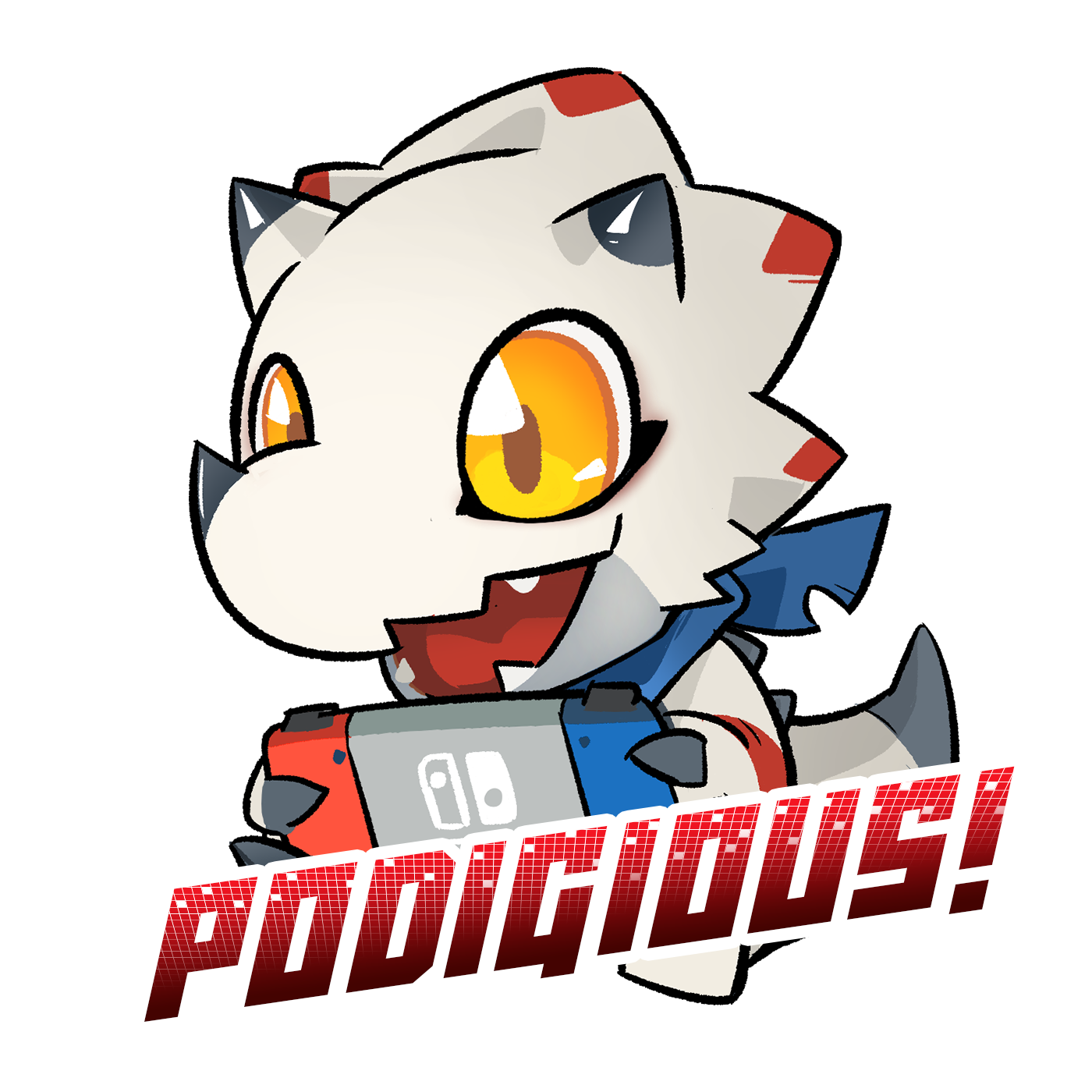Digimon is a series seeped in contradictions. Where other franchises have thrived with a strategic focus on mainstream cuteness, Digimon built up a cult following with its weird hybrid of the cute and creepy aesthetic. Where other series took slow, calculated moves forward to create polished franchises, Digimon took bold, risky jumps which gave fans some great peaks—and lots of lows. As Digimon fans, we too are seeped in contradictions: we all eventually realize that the things we love about Digimon are also the things that have held the series back from serious mainstream popularity in the last two decades.
Which brings us to Digimon Adventure:, the 2020 TV anime reboot of the 1999 Digimon Adventure TV anime. The original 1999 anime was undoubtedly the height of Digimon’s popularity, and the series has struggled to recreate that success ever since. As a fan of the original Adventure season, I’m excited to see more of those kids. As a fan of Digimon as a whole, I’m excited to see the franchise get another shot at mainstream popularity by returning to its most iconic characters.
But I’m more than a little concerned about the franchise focusing so heavily on Adventure, especially since it’s the third time they’ve revisited Adventure in the past 5 years. The most recent film, Digimon Adventure: Last Evolution Kizuna, received positive reviews and seems like it successfully landed with casual Digimon fans in Japan1. But there is the outline of an ominous specter hanging over the new Digimon Adventure: series, and that specter is Digimon Adventure tri.

Digimon Adventure tri., a series of 6 film-length OVAs released between 2015 and 2018, was the first major attempt to dip back into the Adventure well, and by all accounts it was very successful in re-engaging hardcore fans and selling merchandise through pop-up shops for 3 years. Each movie drew in a big wave of discussion in dedicated Digimon communities, but the series failed to enter the general anime zeitgeist. Despite playing around with some really cool ideas and nailing key bits of characterization, tri. was weighed down by a slow release schedule, awkward writing, stiff direction, and limited animation. Lots of casual Digimon fans tried out the movies, grew tired of them, and never got around to finishing.
However, even if Digimon’s track record for revisiting Adventure were rock-solid, there would still be lots of room for concern. I fell in love with the Digimon franchise that responded to the success of Adventure by pushing Taichi and the other kids out of the spotlight in Adventure 02, and then responded to the success of Adventure 02 by pushing all their beloved characters off the board and starting fresh with Tamers. I always saw that as bold, exciting, and daring. The series might not have had the steady polish of Pokemon, but it reached much higher peaks by abandoning its sacred cows and repeatedly pushing itself to find new ones. We never would have gotten Ken’s arc in Adventure 02 or Impmon’s arc in Tamers had the Digimon franchise treated Taichi and Agumon like Ash and Pikachu. At the end of the day, Digimon is a silly kids’ cartoon made to sell toys, but those bold creative choices form the core inspirational message of the series that stuck with me into adulthood. The more the series in recent years leans on Adventure, the more it feels like they’re admitting that those bold creative choices were really just accidents they regret.
As the iconic English theme song of Digimon Frontier goes, we need to “look to the past, as we head for the future”. And that’s what I hope Digimon Adventure: does, boldly step into the future while taking heavy inspiration from the past. These first three episodes of the series show a lot of potential—and a lot of potential red flags—but what most excites me is that it seems clear so far that this reboot is taking lots of bold steps. So let’s dive into these episodes.
Episode 1: ”Tokyo Digital Crisis”
Recap: Taichi meets Koshiro and the two get wrapped up in Digimon shenanigans when Taichi is pulled to the net after boldly (and hopelessly) trying to save his mom and sister. Taichi fights alongside his new partner Agumon, and Koshiro helps him track down the boss monster wrecking havoc on Tokyo trains. Agumon evolves into Greymon to defeat the boss monster, and wows all of us with the lavish detail put into animating a simple evolution sequence.
Episode 1 did a great job introducing the new story and getting us hooked to find out more. For returning Digimon fans, this episode had to convince us that this new show had something new worth watching, and it did that in spades. It was clear from the beginning that things are very different, but also very similar in key, comforting ways. Taichi may get sucked up into the adventure in a completely different way, but his friendship with Koshiro is still pure and beautiful even if they only just met. On the other side, this episode had to hook viewers completely unfamiliar with Digimon, and I think it did a very solid job at that; very little in the episode felt like it would have required knowledge of the original series to appreciate.
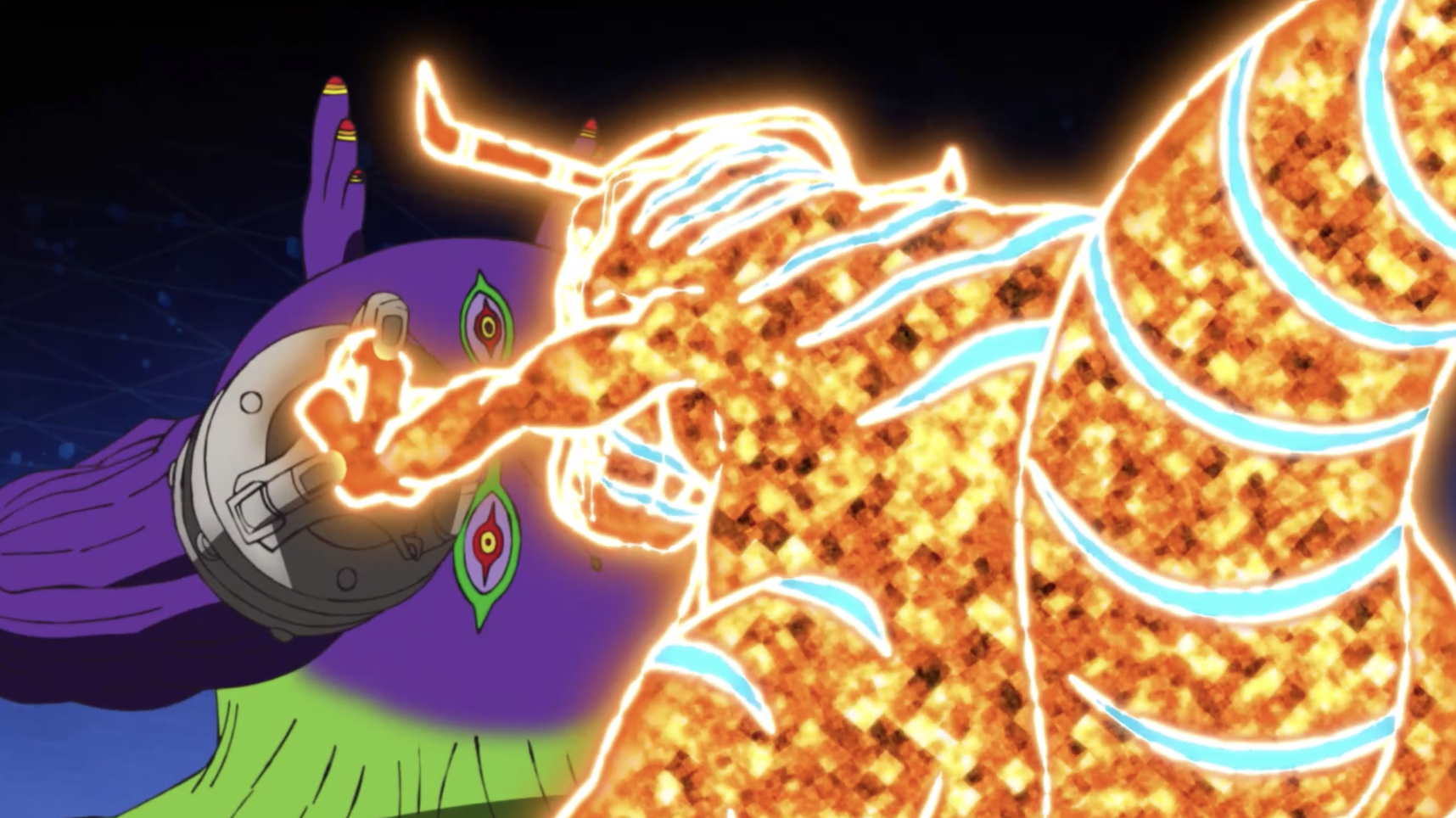
But more surprising was the utter shock of seeing a Digimon TV anime with stellar animation for the first time. The general direction and framing throughout the episode was smart and thoughtful (there are a couple moments where closeups really emphasize Koshiro’s emotional reaction to how accepting and friendly Taichi is). But the action scenes, which have always been Digimon’s weakest element, are what really blew me away. Action scenes in Digimon have always been about simple matchups—aside from a couple key exceptions, if the protagonist has a Digimon of the sufficient evolution level, they’ll beat the enemy. There might be some silly shenanigans where one or two attacks miss, but ultimately they’ll jump back, do the cut-and-paste animation of their named attack and win. It’s not that the battle animation in this episode was mind-blowing on its own, but it completely throws out that stale Digimon formula and gives us reason to actually be excited for Digimon battles again.
Rating: ★★★★½
Episode 2: ”WAR GAME”
Recap: Taichi meets Yamato and Garurumon, and the two kids try to stop Algomon, who has moved on from playing with trains to nuclear submarines. After incorrectly thinking they defeated Algomon, and then incorrectly thinking they defeated Algomon again, Greymon and Garurumon find themselves completely outmatched—until Takeru and Hikaru feather-ex-machine up an Omegamon.
This episode started to lose me a little. Up until the Omegamon reveal, very little of significance actually changes in the episode—at the beginning of the episode, Taichi and Yamato are staring at each other while a US submarine is about to fire a missile; at the end of the episode, Taichi and Yamato stand next to each other while a US submarine fires a missile.
My favorite aspect of episode 1 was seeing Taichi and Koshiro’s relationship; by focusing on just two characters, we could really learn about how they interact. In theory, episode 2 similarly focuses on Taichi and Yamato’s relationship, but since they exchanged so few words it just felt… less fulfilling. After pouring over the episode to gather images and gifs to shitpost on social media, I came to appreciate a lot of nuance in Yamato’s mannerisms, and think they tried admirably to communicate things about their relationship through nonverbal signals. But I don’t think that came across, especially to most viewers who just watch once through, and especially for the Digimon-uninitiated who don’t have any preexisting knowledge of Yamato or the TaiYama dynamic.
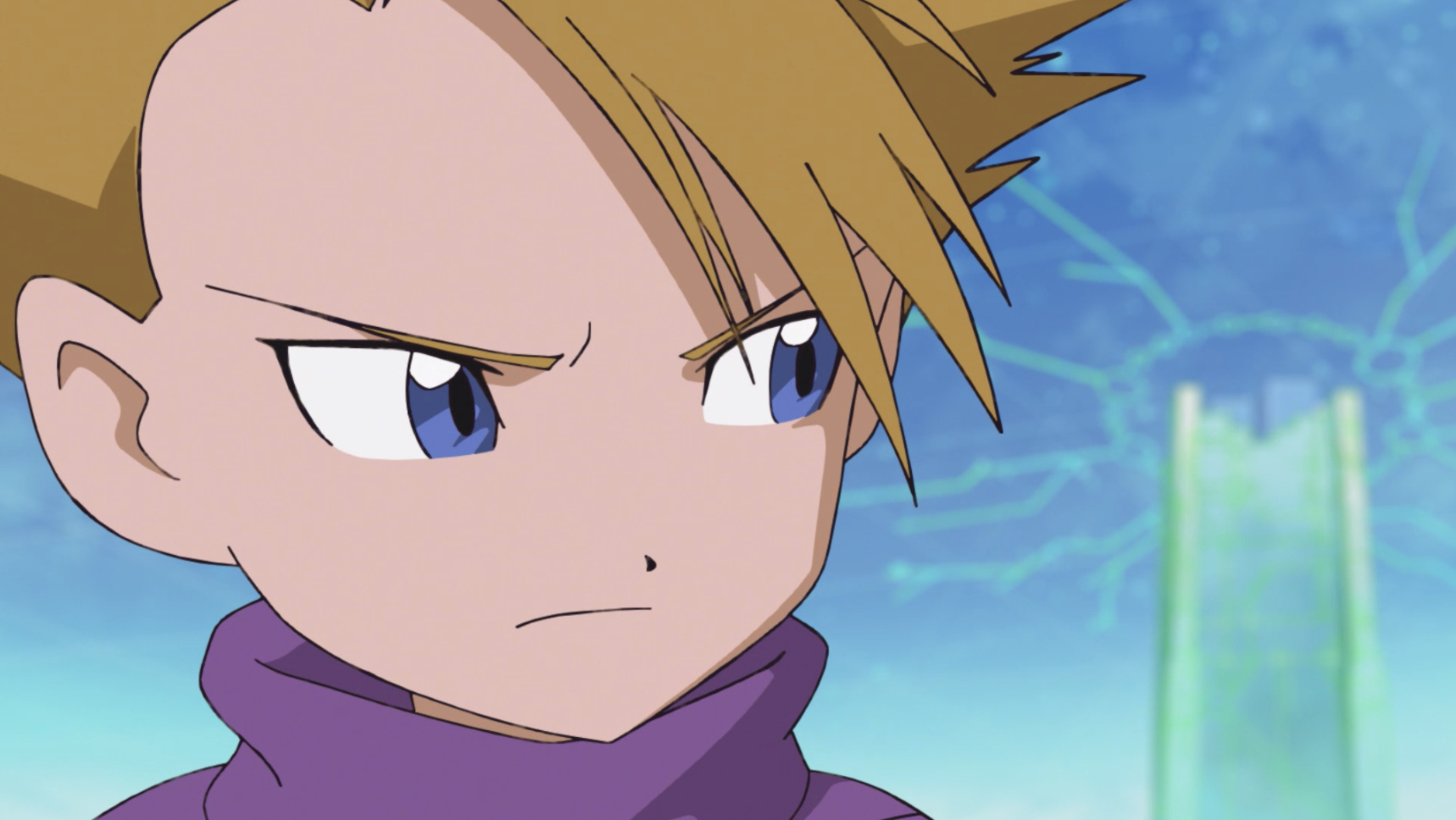
The battle animation in this episode continued to look impressive from a technical perspective, but I think we really started to see how weak it can be if not supported by extremely solid writing. Where episode 1 felt very tight and compact, episode 2 felt empty, repetitive, and sloppy. Not only did we get three phases of the Algomon battle, two of which ended with very similar “is he dead?” fake-outs, but by the end of the episode we’ve just seen Greymon and Garurumon attack so many times at this point. It’s nice that they’re animated so lavishly, and that nearly every attack is a unique, custom animation, but, conceptually, they each only have a single move which we saw re-animated countless times. There were also lots of small moments in the episode that left me going “huh?”2, none of which are major on their own, but add up to a general frustration.
Of course, all of the things I found frustrating in this episode pale in comparison to the event that set the internet aflame—Omegamon’s reveal. Lots of fans reacted with knee-jerk responses that it was way too soon, that introducing such an end-game Digimon so early removes any tension in the series and completely undercuts or betrays the original movie. And… I think it’s way too soon to conclude any of that. We really need to see the fallout of his appearance to know how it impacts the rest of the season. Some of those complaints I think are downright silly—it’s been abundantly clear3 that this was going to be a one-off introduction situation, so concerns of Omegamon being some form of absurd power creep seem pretty unfounded. Other complaints I think are totally fair, and we have to wait and see if the rest of the series handles it elegantly. For example, can the show get us to care about Birdramon in episode 4 if we just got used to Omegamon? We’ll see.
But I love that Omegamon’s reveal was able to upset people. I think that shows that people are already excited about and invested in the show to a surprising degree. And it also shows that the writers of this season are willing to take risks and upset people. One of my many complaints with Digimon Adventure tri. was that it seemed in many respects designed to not step on anyone’s toes or change things too much that people might get offended4 or hurt merch potential, so I’m really glad that this series is willing to break things.
Rating: ★★★☆☆
Episode 3: “And to the Digital World”
Recap: Omegamon defeats Algomon, but it doesn’t stop the missile, so Taichi and Yamato believe in the heart of the cards real hard until Omegamon scares the missile into turning around. The missile explodes in the air, which causes Taichi and Yamato to lag out of their MMO, so Taichi and Koshiro go home. A week later, Taichi and Koshiro go to camp for the summer and… don’t wind up living in a Digital Land. Until a day later, when Tokyo gets hit by a blackout and Taichi, Koshiro, and four other kids get sucked into Jurassic Park.
On paper, this episode was a return to the balance of action and character development that I missed in episode 2, but it also made me realize that I misdiagnosed my issues with episode 2. I don’t think episode 2 felt thin or lackluster because so much screen time was devoted to a battle—plenty of shonen anime are constructed around nonstop battles without feeling dull or empty. It’s more that the battle felt repetitive, and also a bit meaningless—as soon as we saw episode 2 was titled “WAR GAME”, we all suspected that Omegamon might show up, so it felt hollow seeing Greymon and Garurumon struggle for an entire episode.
Which brings me back to episode 3. While this was a return to the character development and relationship building content that I craved, I went in to this episode hyped to see the Digital World, so the entire second half of the episode felt like treading water. I wish I could have gone in knowing that the episode’s title was more of misleading tease—that we wouldn’t see the Digital World until the last couple seconds. Then I could’ve appreciated the bulk of this episode for what it actually was instead of expecting it to be something else.
I think I’ll grow to appreciate the second half of the episode more once I rewatch and look back on this episode without those expectations, but I wasn’t particularly wowed by the battle in the first half either. It feels weird to say, but I think Greymon may have actually been more interesting to watch in battle than Omegamon. Historically, Digimon’s crappy animation meant that a Digimon with a cool design and cool special moves (like a giant sword and gun) almost always looked more interesting in battle than a Digimon with a bland design and bland moves (like a fireball), but the creative, lavish animation breathed so much life into Greymon. We’ll see how it plays out over the rest of the season, but I think this animation style is most impressive on Digimon with simple designs who have been rethought to move and attack in interesting ways; with giant, complex Digimon, I don’t think there’s going to be that much difference from how we’ve seen them in the past.
But the aspect of the episode I find most frustrating is the resolution of the missile situation. In Our War Game, the missile is disarmed as soon as Diaboromon is defeated, allowing it to land peacefully in the ocean by Odaiba; this doesn’t really make tons of sense (it’s not like a nuclear missile needs active hacking to remain armed), but it was easy to suspend disbelief and felt narratively satisfying. In Adventure:, they play things a little more realistically, and defeating Algomon does nothing to redirect or disarm the missile. Cool, that’s fine. That’s even a pretty cool twist to play, because it directly subverts the expectations of Our War Game fans; once the show goes off-script, we’re left hanging on the edges of our seats like we were the first time we saw the film.
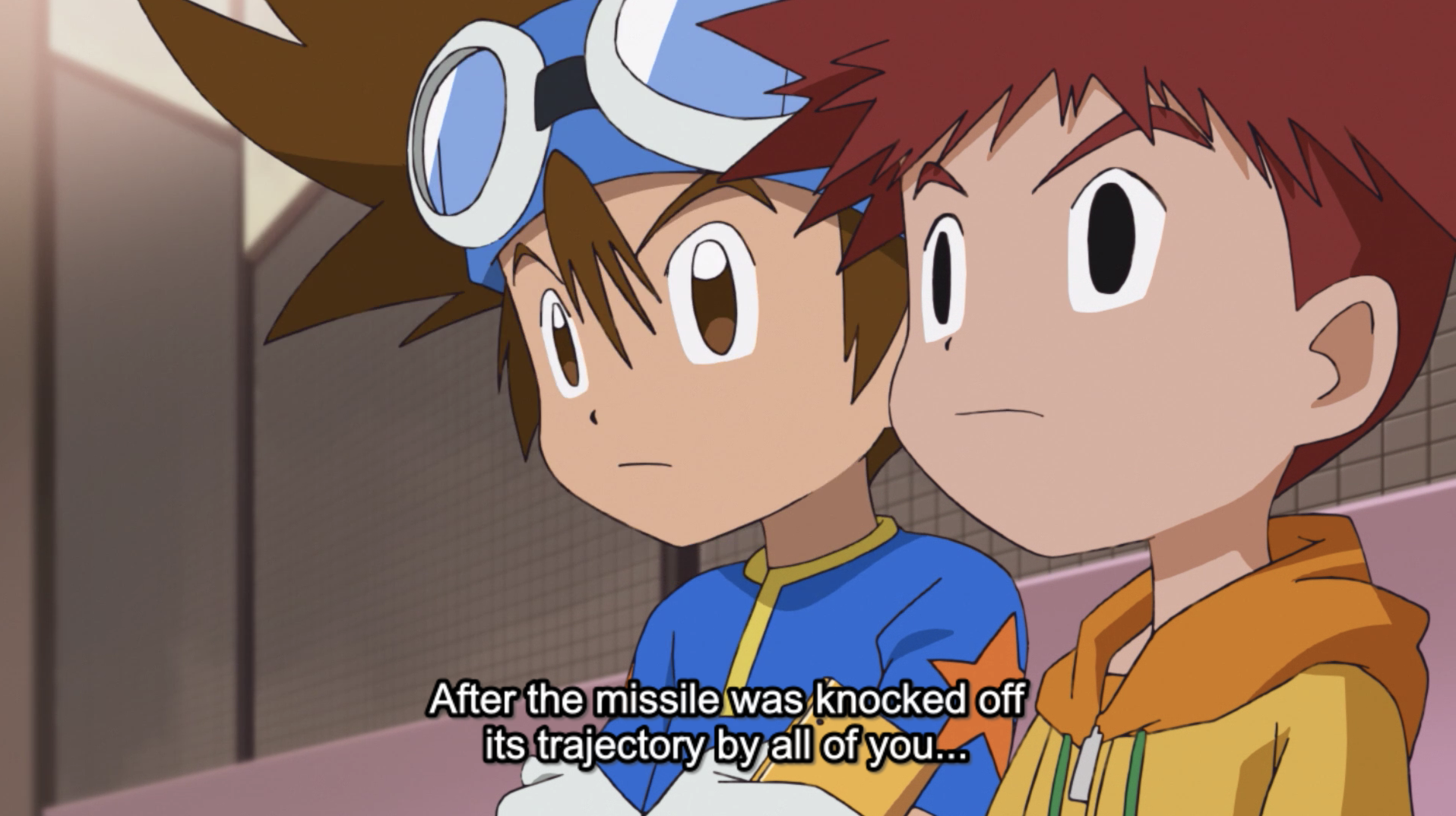
But how does the show resolve the missile situation now that it isn’t as easy as destroying an enemy Digimon? Taichi just closes his eyes, meditates a bit, declares that they need to blow up the missile (somehow??)5, Omegamon visualizes a falling missile and some code (somehow??), and slashes it real hard with his sword. And then, magically, the missile makes a U-turn into the earth’s atmosphere to blow up safely. None of this makes sense. When they destroy the digital missile, it’s represented as a bunch of digi-code that’s been locked by Algomon’s vines, so I guess they’re destroying the last commands Algomon gave to the missile? Is the show implying that Omegamon attacking that digital image of a missile with a giant sword beam is just… a metaphor for reprogramming its trajectory?? Right as I was starting to admire the show for going in a “every solution isn’t as easy as just destroying something” direction, it turned out I was the one getting flipped around and sent into the sky. Koshiro later speculates that a mysterious power intervened to restore power to devices after the explosion created an electromagnetic pulse, so the only thing that makes sense to me is that that same power intervened to fix the missile’s trajectory once Omegamon destroyed Algomon’s lock. But Koshiro directly attributes the missile’s redirect to Omegamon; it’s possible Koshiro was wrong here, but I think that’s unlikely given how much he’s traditionally served to relay information to the audience.
Rating: ★★★½☆
Now that this introductory arc of Digimon Adventure: has wrapped up, it’s clear that the idea behind this arc was to remix Our War Game into the inciting event that causes the kids to become chosen. In some ways, this is very similar to the recent trend in shonen anime like Dragon Ball Super and Boruto of re-animating movie events in the TV series. But Digimon Adventure:’s “Our War Game 2.0” arc stands apart from those by clearly aiming for a remix instead of a direct adaptation. There are lots of key elements to the Our War Game film (struggling to communicate over the internet, Taichi’s relationship with Sora, getting support from people around the world) which are simply not present at all in these 3 episodes, and I think that’s totally fine. This arc was clearly aiming to be a more exciting Hightonview Terrace Incident6, not a TV-sized Our War Game, and I think it was very successful at that. This may not have been the most exciting appearance of Omegamon that we’ve seen, but I think it’s a really smart choice to launch the series with something more bombastic (and controversial) than Greymon fighting a giant parrot in a street, which I remember even as a kid finding oddly mundane in the scope of the original show’s events.
Our War Game is perhaps the most beloved aspect of Digimon media by the fandom as a whole, so I really respect the audacity to attempt something similar to it right off the bat. Like they say, “You come at the king, you best not miss.”
As I’m wrapping up my thoughts on this first arc, I realize that a large percentage of my words have been devoted to things I found frustrating, and I want to end on a more positive note. In some ways, the frustrations stand out more because the general quality of the show is so much higher than I come to expect for Digimon. The animation is stellar throughout, the music is evocative and epic, and I’m really intrigued by the way they’ve shaken up the Adventure story. We’ve only gotten a tiny glimpse of it, but the Digital World looks like it might be everything I wanted it to be—it’s scary, grand, impressive, and actually looks DIGITAL. The only area of the show that seems weak so far is the writing. But I’m hopeful that the blemishes we saw in episodes 2 and 3 are one-off incidents and aren’t representative of the whole series. And, in the scheme of things, “deleting missile code makes it… U-turn into the sky?” is fairly low in the list of Digimon scenarios written so poorly they don’t actually make much sense (and leave fans endlessly speculating about 20 years later).
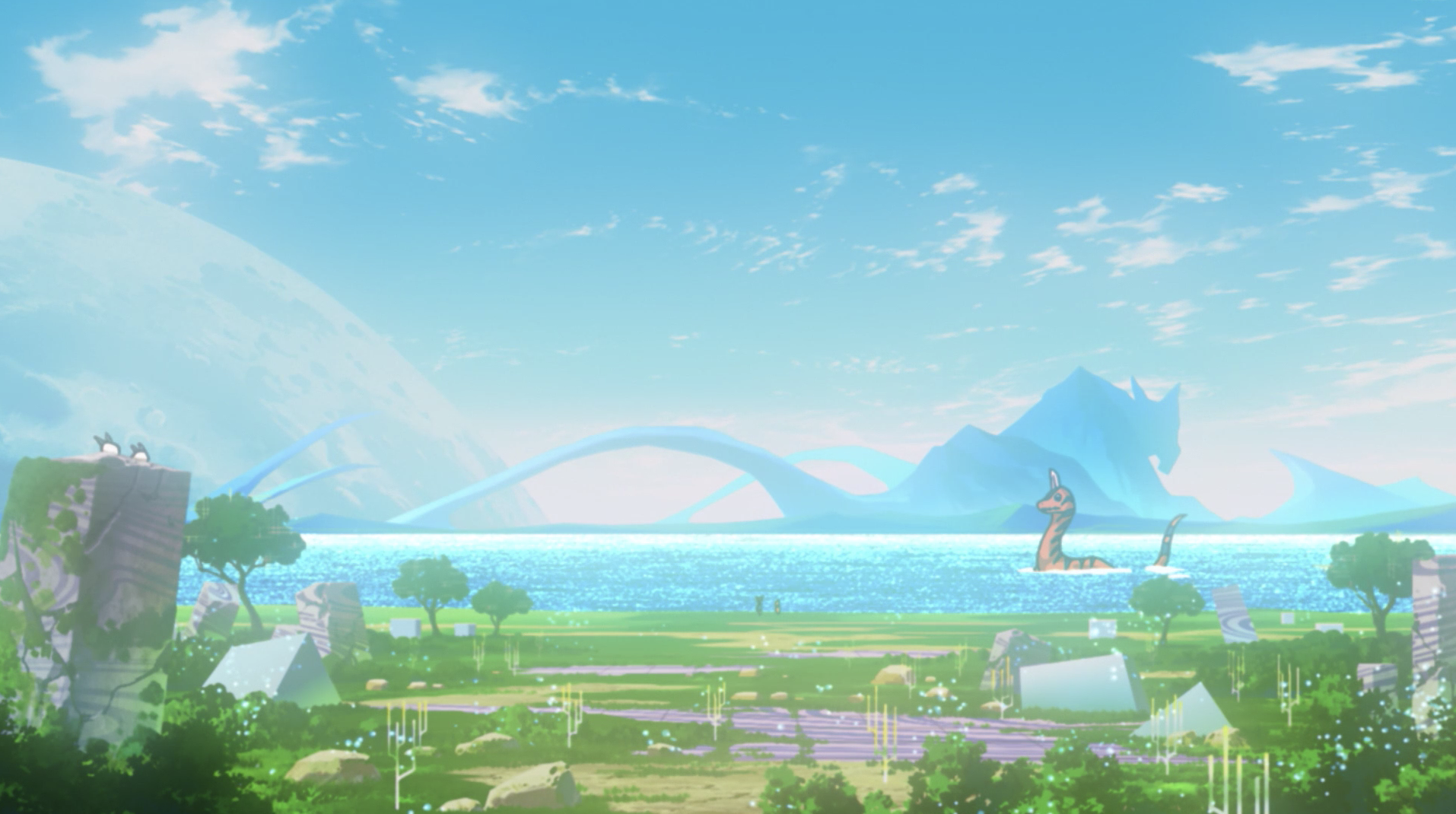
As someone who has spent a lot of time and energy creating content about Digimon, I often lament that there’s really no good entry point for adults to get into the series. I love every season of the show, but they’re all pretty mediocre unless you come into them with an affection for the concept or the characters. And it’s pretty hard to get people into the show if you explain that you have to sit through 10+ episodes before you might start caring. For a while, Cyber Sleuth felt like it had one of the most accessible Digimon stories for non-fans, but I think the gameplay in that game is just unpolished enough to off-putting for people who aren’t already fans. Adventure: excites me because it feels like for once the show might have enough polish that it actually looks appealing to people right off the bat, and makes them want to stick with it long enough to get attached to these characters.
“Bad pacing” is a phrase flung around a lot in the anime fandom, and I’ve certainly seen the accusation thrown around for these first three episodes of Digimon Adventure:. When people shrug something off as “bad pacing”, I think they’re conflating three very different kinds of pacing: shot-to-shot pacing (the pacing of a scene), scene-to-scene pacing (the pacing of an episode), and episode-to-episode pacing (the pacing of a series). These episodes pretty much nailed the shot-to-shot pacing (scenes flowed smoothly, dramatic tension felt like it built and resolved naturally, the camera lingered on frames to effectively hammer in specific emotions), which is something I appreciate from Digimon after tri. had some of the worst shot-to-shot pacing from any anime I’ve seen. The scene-to-scene and episode-to-episode pacing is where I start to worry. In both episode 2 and 3, the scene-to-scene pacing just felt slow, taking an entire episode both times to build up to things teased in the title. Sometimes a slow buildup is important to build dramatic weight, but it can easily feel like treading water if you can see the conclusion from a mile away. On the other hand, until we know the full fallout of Omegamon, I think it’s fair for people to find the episode-to-episode pacing of jumping to Omegamon in episode 2 to be bafflingly fast.
Like I said at the top, Digimon is a series seeped in contradictions. These episodes were both alarmingly fast and frustratingly slow. But, like Takeru standing at his window waiting for a magic feather, I have hope; the scene-to-scene pacing could pick up as the series goes on (most anime, especially Digimon, start off pretty slow), and the speed of Omegamon’s introduction will hopefully feel less alarming as we see the context it plays in the rest of the series.
A reboot like this—returning to the Adventure well yet again—should feel stale and desperate, but instead it feels fresh and audacious. In true Digimon fashion, the same things that make us excited also make us nervous. But I’m glad to say that these 3 episodes have eased my nerves and amplified my excitement. I can’t wait to see more of the Digital World and the full ensemble of these beautifully animated kids.
-
The English release of the film was delayed because of the global health pandemic, so I’m just going based off of reviews of casual Digimon fans I know living in Japan, which is admittedly a very limited sample. Here’s hoping that we’ll eventually see the English release someday. I’ve also skimmed over the Digimon Adventure PSP game and the Digimon Adventure tri. stage play since they have little hope of an English release (though the stage play is excellent). ↩
-
I get what they were going for with Yamato charging ahead as a distraction without any communication and Taichi realizing what he was doing, but the presentation of that interaction was just very confusing. The whole “ultra close-range attack” scene was sloppy on many fronts. It’s completely unclear whether Yamato actually verbally communicates the strategy to Taichi (I don’t think he does, because Koshiro is surprised by it when it happens, unless he can’t always hear?) or if they somehow communicate psychically. As soon as Yamato starts talking about a risky strategy that involves both of them and may backfire, it led me (and lots of other people I heard from) to think he was about to mention something about Jogress/DNA Digivolution, so when it was revealed to just be… “attack, but real close this time” it felt very disappointing and lackluster. The idea of Greymon and Garurumon essentially suicide bombing themselves should feel really impressive and dangerous, but because we’d already seen them attack so many times by that point and since the weight wasn’t directly discussed (aside from a vague “it’s dangerous”), it just felt… like yet another attack. ↩
-
Episode titles up through episode 6 were public knowledge when episode 2 aired, and the key piece that made this obvious was that episode 4 is titled “Birdramon Soars”. Clearly the other kids’ Champion/Adult evolutions are relevant still, so they’re not just jumping to endgame evolutions permanently. ↩
-
Is Sora dating Yamato? Did they break up? Recently? A while ago? Who knows, we don’t want to make Taiora shippers mad, so… you decide. ↩
-
This moment, when Taichi and Yamato, are desperate and showing their resolve to save everyone in the face of helpless odds, just felt like it a direct repeat of the scene at the end of episode 2 before Omegamon appears. At least in that moment, they’re basically on the verge of death and the thing that changes their situation is an outside force. We still don’t know what was fully going on with that outside force, but hopefully we’ll get some explanation before the series is over (maybe it was an actual entity, maybe it was just Taichi and Yamato psychically calling out to their siblings as they’re about to die which triggered something). But in this episode, it’s the same kind of dire, hopeless situation, until Taichi just arbitrarily decides he can solve it. That would be a cool character-building moment if it actually felt like Taichi thought of a plan. Instead it feels like Taichi just said “We won’t lose. We’ll solve it!” over and over until it was true. ↩
-
Or Hikarigaoka. ↩
The fallen people will invoke the name of the undead Digimon king and when the clock strikes the hour of the beast...
